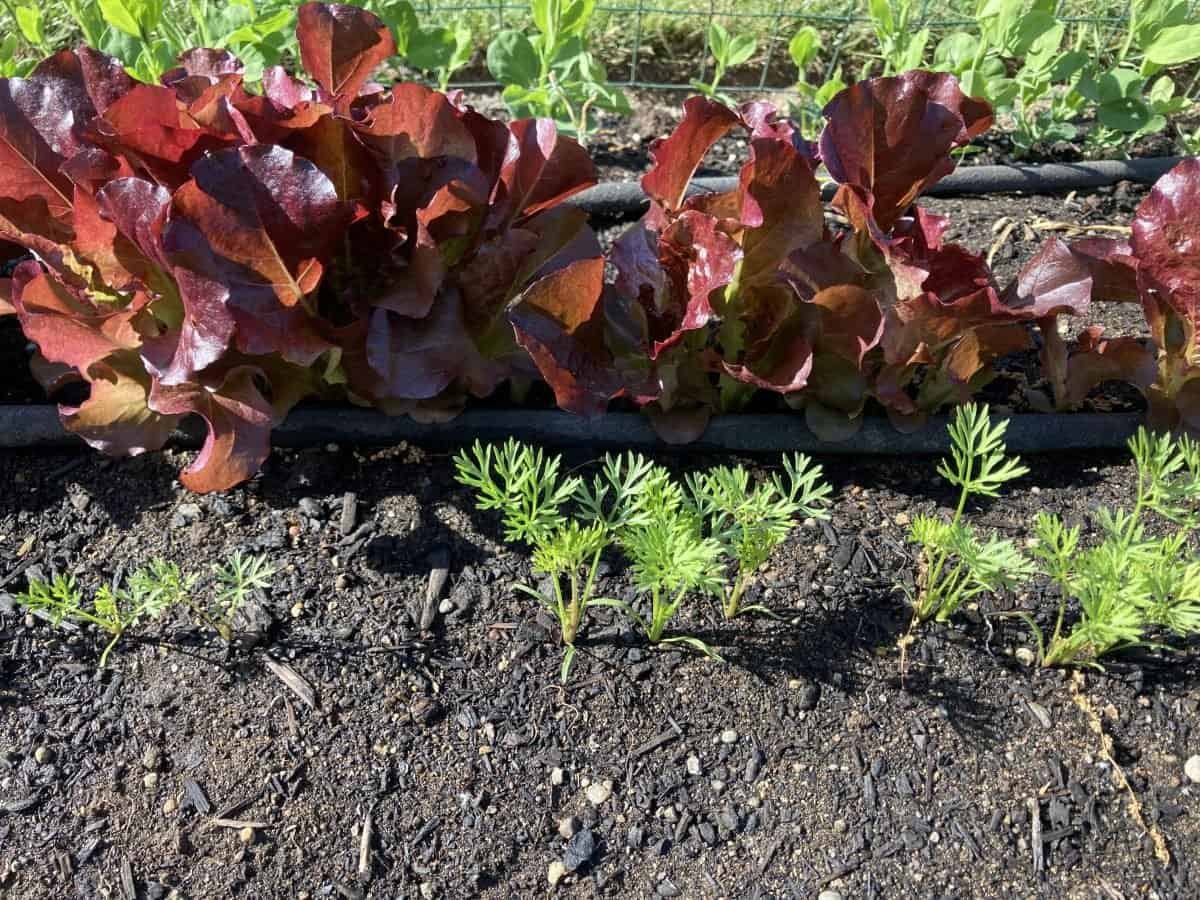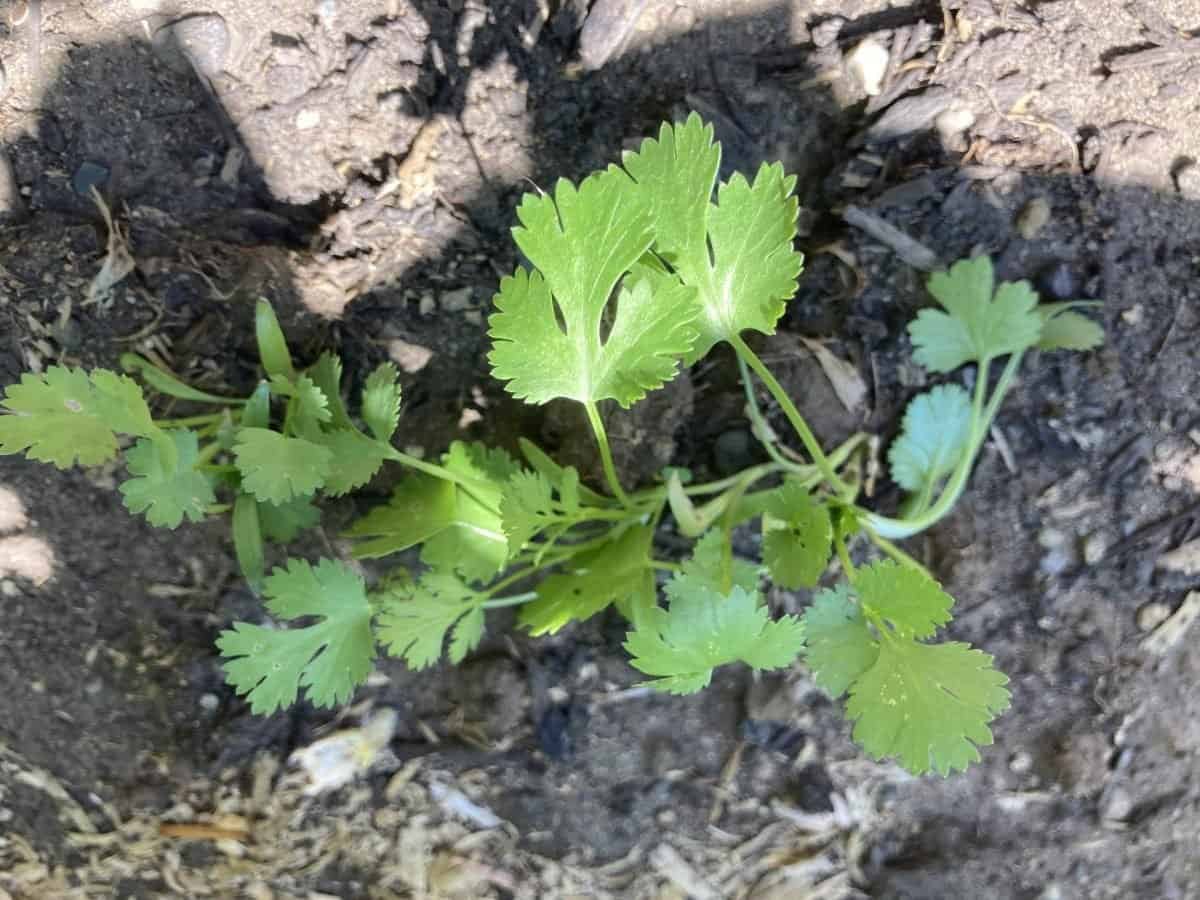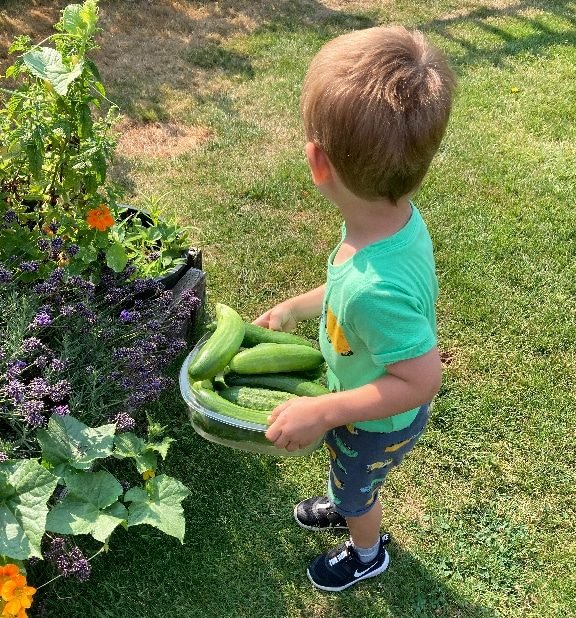This article is a comprehensive guide how to grow in a raised bed garden
Growing a raised bed garden can provide numerous benefits for both novice and experienced gardeners. By offering better control over soil quality, easier maintenance, and improved plant growth, raised beds can be an efficient way to cultivate a thriving garden in limited space.
Regardless of an individual’s gardening experience, setting up a raised bed garden can be straightforward and adaptable to various plant types. Throughout this article, readers will learn valuable tips and techniques for choosing the right materials, planning the layout, and selecting plants to make the most out of their raised bed garden.
From enhancing visual appeal to improving plant health, raised bed gardens have become an increasingly popular method of gardening in urban and rural settings alike. By following expert guidance and understanding the benefits and challenges associated with this gardening approach, anyone can enjoy a successful and bountiful raised bed garden.
Benefits of a Raised Bed Garden
Raised bed gardens offer a variety of advantages to both novice and experienced gardeners. One significant benefit is the ability to control soil quality, which in turn leads to healthier plants. With a raised bed, gardeners can tailor the soil composition to meet the specific needs of the plants, ensuring a richer and more productive growing environment.

Another advantage of raised bed gardens is their accessibility. As they are elevated above ground level, these gardens are easier to reach and maintain, reducing the physical strain often associated with traditional ground-level gardening. This feature makes them an attractive option for individuals with mobility issues or those who struggle with bending and kneeling for extended periods of time.
Better drainage is also a key benefit of raised bed gardens. This can be especially beneficial for plants that do not tolerate waterlogged soil. Improved drainage prevents over-saturation, reduces the risk of root rot, and promotes healthy root growth.
Moreover, raised bed gardens can efficiently maximize the available growing space. By employing vertical gardening techniques such as trellises or stakes, these gardens can accommodate a wider variety of plants, including both vegetables and ornamental species. This is especially useful for urban dwellers or individuals with limited yard space.
Lastly, raised bed gardens often experience fewer problems with pests and weeds. The height of the beds deters some common garden pests, and the contained soil makes it easier to manage invasive plants. A well-maintained raised bed garden can contribute to a cleaner and more enjoyable gardening experience.
Choosing the Right Location
When planning a raised bed garden, selecting the right location is crucial for a successful harvest. A well-placed garden takes advantage of optimal growing conditions and ensures plants thrive.
Consider the following factors when choosing a location:
- Light: Most vegetables require at least 6-8 hours of direct sunlight per day. Observe the area throughout the day to ensure your garden receives adequate sun exposure. Avoid placing the garden in the shade of trees or buildings.
- Drainage: A well-draining site is essential to prevent waterlogged soil and root rot. Avoid areas with a history of standing water or flooding. Raised beds can improve drainage, but selecting a naturally well-draining location provides additional benefits.
- Access: Choose a location that is convenient and easy to access for watering, weeding, and harvesting. Proximity to a water source is helpful, as is having a clear path to the garden for transporting tools and materials.
- Space: Ensure there is enough space for the desired number and size of raised beds, as well as room for walking and working around the beds. Allow for proper spacing between plants to promote good air circulation and prevent overcrowding.
- Soil: While raised beds allow for greater control over the soil composition, it is still helpful to start with a base of native soil that is fertile and free of contaminants.
Once these factors are taken into account, carefully consider each potential location’s suitability for a raised bed garden. By selecting the right location, gardeners set the stage for a bountiful and enjoyable growing season.
Selecting the Best Materials

Choosing the right materials for your raised bed garden is crucial to its success. The materials you select will affect the durability, sustainability, and overall aesthetics of your garden. In this section, we will discuss some of the most popular materials for raised bed gardens.
1. Wood:
- Untreated cedar: Cedar, particularly Western Red Cedar, is a naturally rot-resistant material that can last for up to 15 years. It has a beautiful look and is an environmentally friendly choice.
- Untreated redwood: Similar to cedar, redwood resists rot and insects. It is also aesthetically pleasing and can last for up to 20 years, but it is more expensive than cedar.
- Pressure-treated lumber: Even though this is an affordable option I highly recommend you not use pressure-treated lumber there are too many concerns about using chemically treated wood in food gardens and the risk of that being absorbed into the food you are growing.
2. Metal:
- Galvanized steel: Galvanized steel is a popular choice for raised beds because it is long-lasting, weather-resistant, and can be painted for added aesthetics. However, it may not be suitable for organic gardens due to the galvanized coating.
- Corrugated metal: Offering a modern, industrial look, corrugated metal is similarly durable, weather-resistant, and low-maintenance. It can be used in curved designs and combined with other materials, like wood or stone, for added style.
3. Masonry:
- Bricks: Bricks provide a classic, elegant look and can be arranged in various patterns. They are durable and versatile but require a strong foundation to support the weight.
- Concrete blocks: Concrete blocks can be more affordable than bricks and offer better insulation. Consider using interlocking blocks for easy installation and reinforcement.
- Stone: Natural stone can create a beautiful, long-lasting raised bed with rustic charm. It is, however, more labor-intensive and costly to install than other materials.
Building the Raised Bed
Building a raised bed starts with selecting the appropriate materials. Wooden materials such as untreated cedar, redwood, or pine are popular choices due to their natural resistance to rot and insects. Avoid using treated lumber or railroad ties, as they may contain harmful chemicals that can leach into the soil.
Next, determine the dimensions of your raised bed. Consider the available space in your garden and the types of plants you wish to grow. Ideally, beds should be at least 6 inches deep, but 12 inches is recommended for better root growth. The width of the bed should not exceed 4 feet, ensuring that you can reach the center of the bed without stepping on the soil. The length can vary based on your preference and available space.
Construct the raised bed by following these steps:
- Cut the wood to the desired dimensions: four side pieces (two longer sides and two shorter sides) and optional corner posts for added stability.
- Assemble the frame by attaching the side pieces at the corners, forming a rectangular box. Use galvanized screws to secure the frame together.
- If using corner posts, attach them to the inside of the frame at each corner for added support.
- Place the assembled bed on level ground in your chosen location.
- Fill the bed with a high-quality soil mix that consists of equal parts compost, peat moss or coco coir, and coarse sand or perlite for proper drainage.
Once the raised bed is constructed and filled, you are ready to plant your desired crops. Be sure to allow enough space between plants to ensure proper airflow and prevent overcrowding. Properly maintaining your raised bed garden will provide you with bountiful harvests for years to come.
Preparing the Soil
Raised bed gardens require proper soil preparation to ensure a healthy environment for plants to grow. Begin by selecting a high-quality soil mixture containing a combination of organic matter, minerals, and essential nutrients.
Consider incorporating a blend of the following components:
- Compost, for added nutrients and improved soil structure
- Peat moss or coconut coir, to improve moisture retention
- Perlite or vermiculite, to increase drainage and aeration
It is vital to test the pH of the soil before planting. Most vegetables and flowers thrive in slightly acidic to neutral soil, with a pH range of 6.0 to 7.0. Adding lime or sulfur can help in adjusting the pH if needed.
Once the soil mixture is ready, fill the raised bed to the desired depth, leaving a few inches of space from the top. This will allow room for mulches and prevent soil from spilling over the edges. Gently pack the soil to eliminate air pockets and create a uniform surface.
Consider adding a layer of organic mulch, such as straw, wood chips, or dried leaves, to help retain moisture and suppress weeds. Regularly replenishing mulch and incorporating compost into the soil will maintain its fertility throughout the growing season.
Utilizing the Raised Beds
Now that you have built or bought a raised bed you can maximize the space by growing vertically, square foot growing, or rows and blocks to get the most out of your raised garden beds.
Deciding on the Right Plants
When planning the raised bed garden, it is essential to select the right plants suited for your climate, available space, and personal preferences. Start by researching which plants thrive in your region and have similar growing requirements.
Take into consideration factors such as sunlight exposure, water requirements, and plant growth habits. Here are some suggestions to help you decide on the right plants:
- Choose a mix of plants that can provide various benefits, such as flowers that attract pollinators, herbs for culinary use, and vegetables for your meals.
- Group plants with similar requirements together to manage their care more efficiently. For example, plants that require more water can be placed in one area, while drought-tolerant plants can be positioned in another.
- Select plants with different heights, textures, and colors to create an attractive and dynamic visual display in your raised bed garden.
- Consider incorporating plants that have a reputation for co-existing well, also known as companion planting. This practice can help boost plant growth, reduce pest issues, and create a more balanced ecosystem within your garden.
Once you have an idea of the types of plants you want to grow, consult a planting calendar or guide specific to your region. This resource will offer information on the best time to start seeds indoors, transplant seedlings outdoors, or directly sow seeds into your raised bed garden. Taking the time to research your plants’ requirements and coordinate their planting will ultimately lead to a more successful and enjoyable gardening experience.
Planting Guidelines
Choosing the right plants for your raised bed garden is essential for a successful harvest. Consider the following factors when selecting what to grow:
- Climate and hardiness zone
- Soil type and pH
- Plant size and spacing
- Light and water requirements
Once you have chosen the plants, it’s time to sow seeds or transplant seedlings. Follow the specific instructions for each plant, as they can vary widely. Here are some general guidelines:
| Plant Type | Sowing Depth | Transplant Depth |
|---|---|---|
| Leafy Greens | 0.25-0.5 inches | Same depth as the seedling container |
| Root Vegetables | 0.5-1 inch | Not recommended for transplant |
| Tomatoes | 0.5-1 inch | Bury stem up to the first set of true leaves |
When planting, be mindful of proper spacing to allow for adequate air circulation and growth. Use a planting chart or refer to the seed packet for specific spacing requirements. Additionally, organize your plants according to their sunlight needs: taller plants should be placed on the north side of the bed to prevent shading smaller plants.
Implement crop rotation strategies to prevent depleting soil nutrients and reduce pest and disease pressures. Categorize your plants into families (e.g., Brassicaceae, Solanaceae, etc.), and avoid planting crops from the same family in the same spot in consecutive growing seasons.
Watering and Maintenance
For a successful raised bed garden, it’s essential to manage watering and maintenance properly. Factors such as soil type, climate, and bed location play a crucial role in determining an optimal watering schedule.
As a general guideline, most raised bed gardens require watering once or twice a week during the growing season. It’s best to water the plants in the morning as this allows the plants to take up moisture before the sun evaporates it.
Pay attention to these practical tips for watering and maintenance:
- Use a soaker hose or drip irrigation system for efficient watering.
- Check the soil moisture regularly – avoid overwatering or underwatering.
- Apply a layer of mulch to help maintain soil moisture and temperature.
Maintenance tasks are vital to keep the raised bed garden healthy and pest-free. Some essential maintenance tasks include:
| Task | Frequency |
|---|---|
| Weeding | Weekly |
| Checking for pests | Biweekly |
| Pruning | As needed |
| Fertilizing | Monthly |
By regularly practicing these watering and maintenance techniques, a raised bed garden can thrive and produce bountiful harvests.
Pest and Weed Control
Controlling pests and weeds in a raised bed garden is essential for maintaining a healthy and productive garden. Here are some tips and techniques to help you manage these unwanted intruders.
First and foremost, choose plants that are naturally resistant to pests and diseases. Check with your local nursery or garden center for suggestions, or consult gardening guides specific to your region. This proactive step can help limit pest damage and reduce the need for chemical interventions.
To prevent weeds, a simple and effective approach is to use mulch. Allocate a layer of organic mulch, such as straw or shredded bark, around your plants. This not only discourages weed growth but also helps to retain soil moisture and regulate temperature.
- Mechanical control: Regularly inspect your garden for signs of pests and weeds. Hand-picking pests or using tools, like hoes or weed pullers, can effectively remove or eradicate them.
- Biological control: Encourage beneficial insects like ladybugs, lacewings, and predatory mites, which naturally feed on common garden pests. Planting a variety of flowers can also attract these helpful insects to your raised bed.
- Chemical control: Opt for organic or natural products, ensuring that they are compatible with the plants in your raised bed. I highly recommend you not use pesticides in your garden which can be absorbed into the ground and food you are growing.
Moreover, proper garden maintenance is crucial in minimizing pests and weeds. Keep the plants adequately spaced to promote air circulation and reduce the likelihood of disease transmission. Remove dead leaves, plant debris, and weak plants, as they may harbor pests and diseases.
Remember that vigilance and consistency are key. By routinely monitoring your raised bed and addressing issues as soon as they arise, you can maintain a thriving garden with minimal disruption from pests and weeds.
Harvesting and Enjoying Your Garden
Harvesting your raised bed garden is a rewarding experience. Monitor your garden closely to determine when it is time to harvest your fruits and vegetables. Generally, you should collect your produce when they reach its optimal size, color, and tenderness.
Here are some key tips for harvesting different types of plants in your raised bed garden:
- Leafy greens: Pick outer leaves as they mature, allowing the inner leaves to continue growing. This ensures a continuous harvest throughout the season.
- Root vegetables: Carefully remove them from the soil when they reach the desired size. For example, carrots or beets should be harvested when they reach their full color and size.
- Fruiting plants: Harvest fruits like tomatoes, cucumbers, and peppers when they reach their full color and size, and are slightly soft to the touch. Don’t wait too long, as overripe fruits may rot or attract pests.
After harvesting your produce, don’t forget to wash and store it properly to maximize its freshness and shelf life. Most fruits and vegetables can be stored in a cool, dark place, while leafy greens may require refrigeration in a sealed container.
Enjoying your garden’s bounty is as simple as incorporating it into your daily meals. Experiment with new recipes, share your harvest with friends and neighbors or even consider preserving some of your produce through canning, freezing, or dehydrating. The satisfaction of eating homegrown food is truly unparalleled.
Final Thoughts
By following this comprehensive guide to How to Grow in a Raised Bed Garden building and growing in a raised garden you will have an incredible garden for years to come that you can your family and neighbors will enjoy for the food it will produce and the beauty it will bring you.




